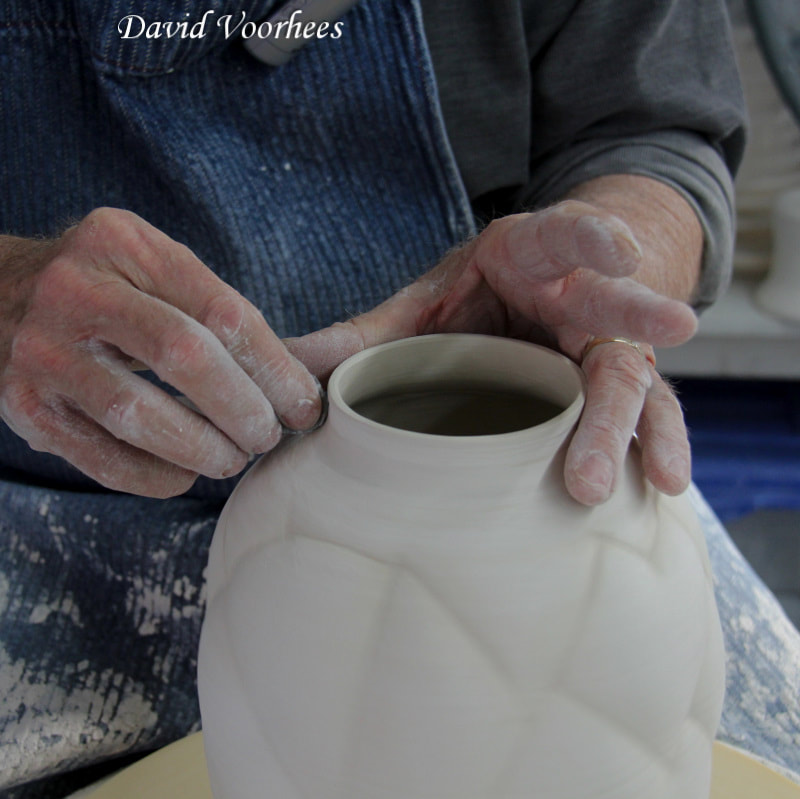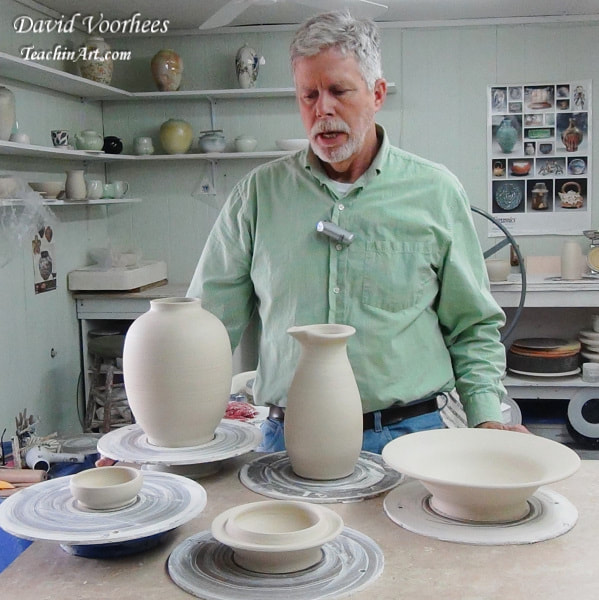Wheel throwing tips from David VoorheesDavid Voorhees is a functional potter from North Carolina with over 40 years experience in ceramics. He is the instructor of the online workshop Porcelain Tips For Wheel Pottery at TeachinArt. Several potters have problems with opening and pulling up consistent cylinders or bowl forms. Some of the problems are uneven walls with too much thickness at the bottom, uneven rims, and slumping clay. These are all common problems associated with skill development and learning to use porcelain on the wheel. Porcelain does require a bit more of us as craftsmen. It needs to be prepared better and we need to limit the amount of time it is allowed to be fully wet during forming. Here are my suggestions for those experiencing these common problems:
Links: Online workshops at TeachinArt Art instructors at TeachinArt Preview the e-courses presented at the art school Demonstrations & tips by our instructors and other artists and crafter's Tags:
#potterytips #wheelthrown #wheelthrownporcelain #wheelthrowingtips #ceramicschool #teachinart #wedgingclay #wedging
2 Comments
1/27/2023 05:57:01 pm
I didn't know that you could make clay bowls in different styles. My wife wants some unique bowls. I'll have to consider getting some custom-ordered ones.
Reply
2/6/2023 10:19:05 am
Tex,
Reply
Your comment will be posted after it is approved.
Leave a Reply. |
AuthorTeachinArt is an online art school with professional artists as instructors who educate, enridge and promote art. Categories
All
|


 RSS Feed
RSS Feed